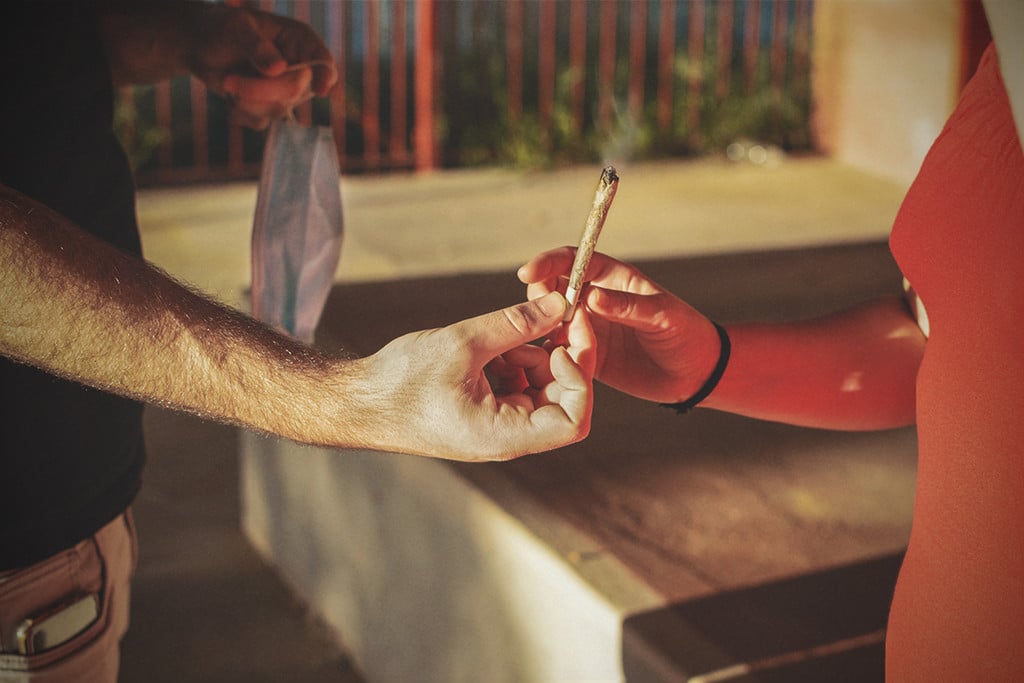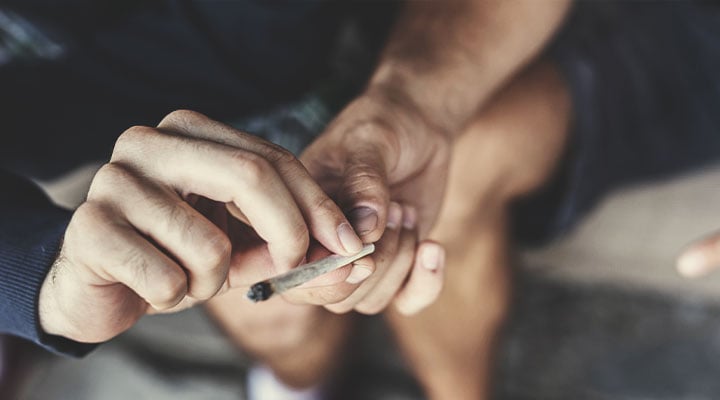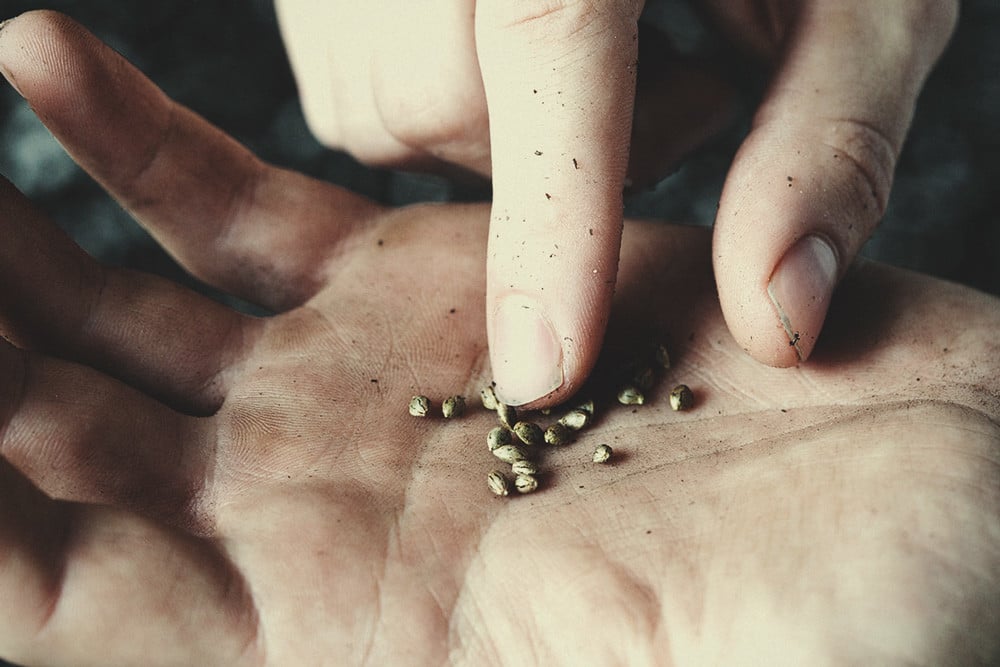.

Germaphobe: Is It Safe to Share Joints?
Veteran cannabis users are quite familiar with the practice of passing a joint around. But is it a safe practice, or should we avoid it? Is it all just paranoia, or are there real grounds for concern? We delve into this conversation in this article, and suggest some ways to share weed while mitigating pathogen transmission.
Contents:
Sharing a joint is a cherished practice in stoner culture. It’s been this way since time immemorial, and it’s a tradition that likely isn’t going away any time soon. It’s the best way to make new friends while strengthening bonds with old ones.
But on the flip side, there’s the issue of hygiene. Especially for those who identify as germaphobes, the mere idea of ingesting another person’s oral fluids is a nightmare. And that apprehension is understandable.
So what’s the deal here? Are these concerns valid? Or is it all paranoia? We’ll discuss this much-talked-about topic, and provide some tips for sharing weed safely.
How Germs Spread
To fully answer the question of whether it's safe to share weed, we must first look at how germs actually spread. Perhaps we all have a general idea of how it works, but let’s get a little scientific here.
As otolaryngologist Dr Michael Benniger tells the Cleveland Clinic[1], human saliva contains antibodies and enzymes that “decrease the risk of contagions”. However, he also points out that any activity that involves swapping spit “is a high-risk contact”. That means the transmission of germs—including those that spread severe diseases—is easier.
It’s also important to note that different kinds of bacteria exist all around us. According to[2] Piedmont Atlanta Hospital infectious disease expert Dr Christine Zurawski, MD, viruses and bacteria “are part of our daily lives”. It’s just a matter of determining which ones are “good” and which ones are “bad”.
Dr Zurawski points out that bacteria on personal belongings like a phone isn’t something to be worried about. Rather, it’s the pathogens outside of your home that can be a cause for concern.


Can Sharing a Joint Get You Sick?
According to[3] NYU Clinical Professor of Microbiology and Pathology Philip Tierno, about 80% of infectious diseases spread through direct and indirect contact. That includes touching surfaces and then a sensitive part of your body, like your eye.
In the case of sharing saliva, Tierno explains that such activities—including sharing joints—puts people at risk of catching the flu and herpes. You’re also predisposed to contracting strep throat, staph infections, stomach flu, and even meningitis.
-
Can You Get Herpes From Sharing a Joint or Bong?
Germs need a moist environment to keep themselves alive outside the body. This then begs some questions: how does this apply to passing joints? Can these germs stay alive on the crutch of a jay?
According to Tierno, the humidity of the surrounding air is “sufficient moisture” to help germs thrive. And if sharing a joint indoors where no UV light is present, staph, for example, can remain alive for months.
With that in mind, sharing a joint with a group of people could increase the chance of contracting or passing various diseases, including viral diseases like herpes. But according to Tierno, exposure to any form of UV light can kill bacteria within “a minute”.
But does that mean trying to “burn off” pathogens on the crutch/filter of a joint with a lighter is a suitable solution? As of right now, it remains a smoker’s myth, and no evidence points to an affirmative answer, so far.
What about bongs, though? There isn’t as much saliva contact, so does it make any difference? Unfortunately, the answer isn’t very favourable for bong lovers. Since there is still lip contact with the device, yes, you can catch herpes and other diseases from other smokers.
If we’re talking about herpes, in particular, sharing joints or bongs could result in contracting herpes simplex type 1 (HSV-1). To make a distinction, HSV-1 is transmitted orally, while HSV-2 spreads through skin-to-skin contact.
In the case of HSV-1, the highest chances of transmission occur if an infected person comes into direct contact with another. So if one person in the group has the virus, there’s a good chance they’ll spread it to everyone they touch base with.
Most HSV-1 cases are not severe. However, studies[4] have discovered that it can cause temporal lobe damage, even Alzheimer’s disease. It would definitely be best to avoid it.


-
Can Sharing Weed Cause Coronavirus Infection?
If you’re reading this during the time of COVID-19, you’ve likely grown very familiar with its effects and how it spreads. And despite taking precautionary measures, a good handful of you were likely still unfortunate enough to catch it.
As we’ve all seen, the coronavirus easily spreads through mere respiratory droplets. So if a sneeze from close range can cause an infection, sharing weed through a joint or bong definitely can.
If you or anyone in your group is experiencing symptoms of COVID-19, it would be best not to puff, puff, pass.
-
What About HIV?
In this case, you have nothing to worry about. HIV is primarily passed around through sharing needles or syringes and through sexual contact. So unless you plan on doing any of this, you shouldn’t worry about HIV infection through smoking.
How to Share Weed Safely
Given these concerns, is it possible to safely share weed? This is a valid question that germaphobes have lingering in their minds, and we may have the answer.
-
Joints
There is a safe, contactless way to share a joint, believe it or not. And it involves a little trick of the hand.
Start off by placing the non-burning end of an unlit joint between your two smallest fingers. Next, connect your index finger to your thumb to create a circle with your hand.
The other hand will serve as a base to your rounded paw, so you’ll form it into a cup-like shape. Connect both hands by having the fingers of your cupped hand touching the smallest fingers of your rounded hand.
The hole you created using your rounded hand will act as a chamber to puff in some smoke from. Have someone light the joint, and as you’ll see, there is no contact with your mouth and the joint, lessening the likelihood of potential bacteria and disease transmission. It may take some practice, but decent hits are achievable.


-
Vapes
The previous strategy you used may not work with vapes, which means there is no way to prevent saliva transmission.
Your best bet here would be to sanitise the mouthpiece after every use. Some options include hot water, germ-killing hand sanitiser, or soap and water. It can be a bit of a hassle to cleanse and rinse it every time, but it is the best way to prevent contamination.
-
Bongs
On the other hand, the bong’s rounded shape allows for the same treatment you’d give the joint method—use your hands to avoid mouth-to-bong contact. But even passing it around can still lead to contamination.
Just like with the vape, bongs need regular sanitising. The great thing here is that high-quality glass bongs are easy to cleanse and rinse.
-
Share a Joint With Close Friends Only
Knowing the people in your joint circle minimises the risk of infection. That is, of course, if they are honest about their physical condition.
In any case, keep your inner smoking circle as small as possible, and make sure that no one is displaying any symptoms. Anyone who does should (temporarily) not be included in the circle.
-
Watch Out in Times of COVID
If you’re reading this during COVID, taking extra precautions is a no-brainer. In this case, avoid sharing joints or bongs altogether.
Sure, you can have small gatherings with close friends. But you may want to do away with any activity that involves the sharing of saliva. As the often-used but still effective saying goes: it’s better to be safe than sorry.
Sharing Weed: Some Germs Are Inevitable
Whether or not you identify as a germaphobe, it doesn’t hurt to be extra careful with germ and bacteria transmission. But at the same time, it pays to know the dos and don'ts so you can still enjoy smoking with friends.
By knowing the right bits of information, you can share weed with mates while doing your best to prevent the spread of disease. There is always some inherent risk when sharing a joint, but this sort of social smoking ritual is also one of the things that makes the cannabis community so connected. So it’s up to you. And in case you forget the tips and tricks, you always have this article to look back on.
- Does Saliva Have Health Risks? 3 Ways Germs Can Spread https://health.clevelandclinic.org
- Are you a germaphobe? https://www.piedmont.org
- The Germaphobe's Guide to Sharing a Joint https://www.vice.com
- Herpes Simplex Type I (HSV-1) Infection of the Nervous System https://www.ncbi.nlm.nih.gov





































